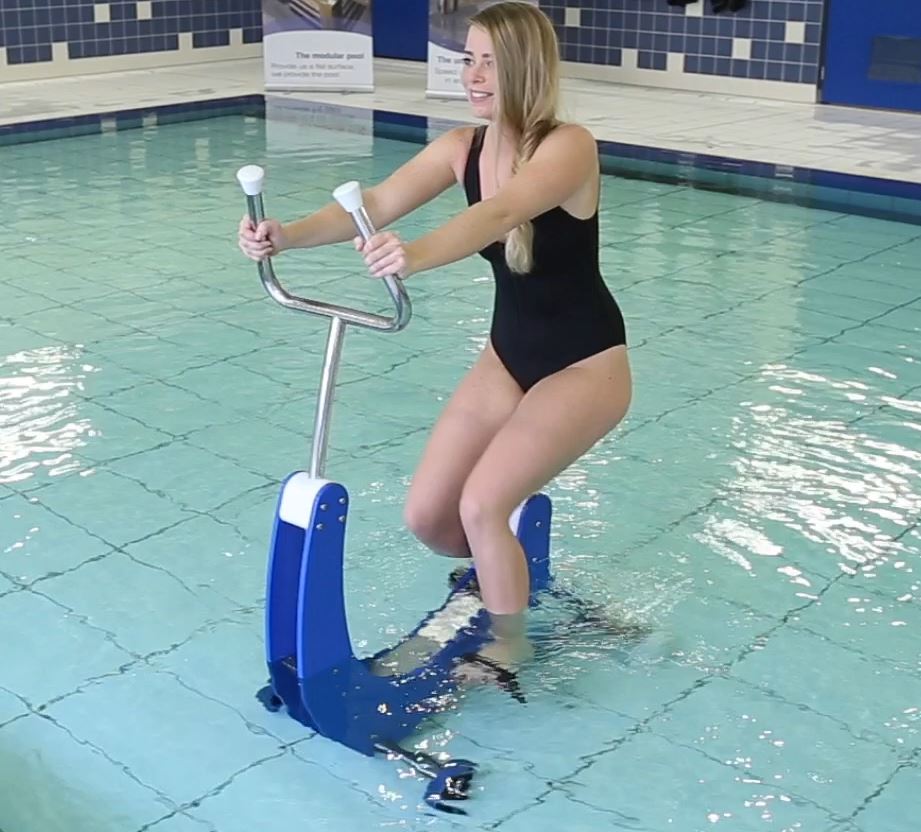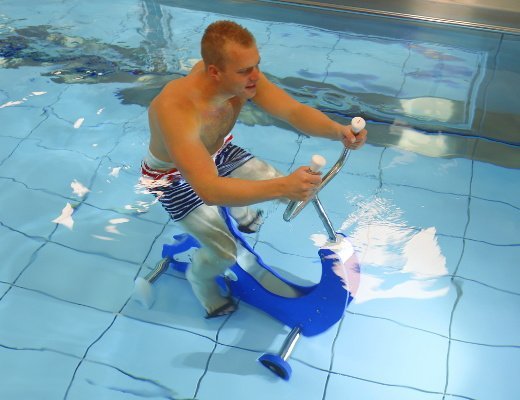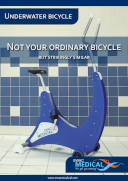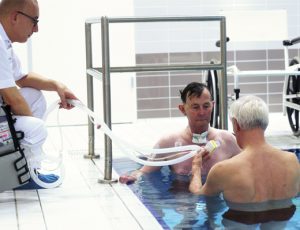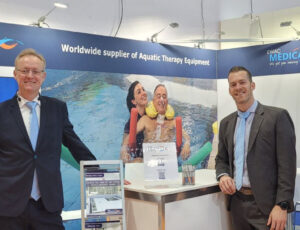Application
The EWAC medical underwater bicycle, also known as an aqua bike, is a specialized piece of equipment that is used in water-based rehabilitation to provide a low-impact cardiovascular workout for patients.
The buoyancy of the water reduces stress on the joints and spine, making it an ideal option for patients with injuries or mobility issues. The resistance of the water, and the resistance created by our specially developed resistance mechanism provides a challenging workout that helps to improve cardiovascular fitness and muscle tone.
An underwater bicycle can also be used to help patients improve their balance and coordination. The water provides a stable and secure environment for patients to practice pedaling movements, which can help to improve overall balance and stability.
Additionally, an underwater bicycle can be used for patients who are recovering from injuries or surgeries to the lower extremities such as knee or hip replacement. It also can be used for patients with chronic conditions such as arthritis to help improve flexibility, range of motion and muscle strength.
Overall, the EWAC Medical underwater bicycle is a versatile and effective tool for water-based rehabilitation, helping patients to improve their cardiovascular fitness, muscle tone, balance, and coordination. It provides a low-impact workout that can be customized to suit the needs and abilities of each patient.
Product
The EWAC Medical underwater bicycle is specially designed for cycling exercises in water for rehabilitation purposes. Due to the unique properties of the variable resistance mechanism, the underwater bicycle can be used in any stage of the rehabilitation process.
The frame is made out of polished stainless steel and therefore the bicycle is suitable for use in a pool.
Experience
The underwater bicycle is ideal in all stages of rehabilitation. EWAC Medical has developed this underwaterbicycle with its experience in mind, that different stages of rehabilitation require a different amount of resistance. All this functionality is combined in one product.
Find out about our extensive expericence in projects around the world.
Knowledge
Repetative, low impact rotating leg movements are of increadible value in rehabilitation of lower extremities. Due to the warm water, buoyancy and the unique properties of the resistance mechanism, joints can be easily mobilised.
Resistance is speed dependent, so the bicycle can be used in any stage. Take a look at our articles about musculoskeletal, and sports rehabilitation.
| ENQUIRE NOW |
